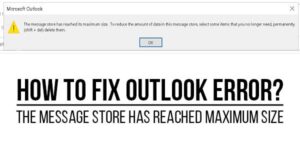
Your daily lives now revolve around wearable technology. This has a significant positive impact on our general health and wellness. Fitness trackers, watches, and wellness monitoring systems are just a few examples of gadgets that allow you to measure the right path and keep an eye on many elements of well-being, from sleep quality to exercise habits. If you are building a wearable device, you need to ensure proper accessibility through wearable device testing.
Furthermore, as wearable technology develops further, it’s critical to guarantee that these gadgets are dependable and offer good user experiences. Software quality assurance is useful in this situation. Here, you will learn about the value of Wearable device testing in this blog, along with some best practices for carrying out efficient tests. Now, let’s get going.
Table of Contents
Understanding Wearable Device Testing:
Wearable technologies have grown in demand earlier. According to industry projections, the worldwide wearable device market is predicted to increase by more than US$ 380.5 billion by 2028. As you know, there are several sorts of wearable devices, and wearables are the most common, with over 340 million people using them by 2023. These findings reflect the growing rise of wearable tracking technologies in healthcare.
Key Challenges In Testing Wearable Devices:
Variability In User Environments:
The most major challenge for Wearable device testing will undoubtedly be precision, or even more specifically, calibration concerns. Regular monitoring of health metrics can provide consumers with relevant information. However, any weaknesses in the software and hardware used to collect data may diminish the effectiveness of any wearable device.
Even the most advanced physiological sensors now accessible have restrictions, such as motion artefacts and interference with signalling, which might result in imprecise or incorrect data.
This challenge can only be overcome via continuous investment in innovation and research of fresh sensor technologies and calibration methods.
Integration With Mobile Devices And Other Technologies:
To use wearable healthcare equipment safely; healthcare providers ought to consult with protection integrators and commercial safety installers to develop unique security plans and put in place appropriate precautionary measures involving larger systems like access control devices and security cameras. To prevent new vulnerabilities, it should be updated frequently.
All wearable health equipment applied in a professional setting must be securely linked to current information processing platforms. To make the data collected by these devices usable, Wearable testing businesses must define how customer data will be reliably transmitted to storage systems and analysis tools provided by diverse providers.
How To Set Up Your Testing Environment?
Laboratory Testing:
Determine the particular goals and objectives for the user Wearable testing. Consider the topics you want to learn, what characteristics to evaluate, and the app’s general usefulness.
Determine the testing approach, which may include moderated as well as unmoderated testing, distant or in-person testing, and either qualitative or quantitative information collecting. Define the tasks and situations that users will complete throughout the test.
Find volunteers who fit your target audience’s characteristics and have previous experience using wearable devices. Consider age, gender, technical knowledge, and familiarity regarding your application’s domain.
Field Testing:
Create an appropriate Wearable testing environment that simulates real-world scenarios in which users will engage with the smartwatch app. Ensure that the devices are properly charged and that any necessary support equipment is accessible.
Explain the test’s aim to participants and give them straightforward directions for each activity. Observe and record their interactions, conduct, and feedback. Encourage individuals to think openly while doing the exercises to better understand their mental processes.
Review and evaluate the data gathered during user testing. Check for trends, typical pain areas, and usability difficulties. Determine the achievement rate, completion timeline, and user satisfaction metrics. Determine areas for improvement while prioritizing them according to their influence on the consumer’s experience.
Depending on the results, make the required changes to the device’s application. Address the highlighted usability flaws, fine-tune the user interface, and improve the whole user experience. Repeat the testing procedure with the revised version to confirm the improvements.
Remember that good user testing is iterative. Continuously gather input, iterate on the aesthetic, and fine-tune the application to give the best experience possible for gadget users.

Best Practices For Wearable Device Testing:
Functional Testing:
First and foremost, make sure your app or device functions as intended. Testing on actual devices in the wild offers you an idea of how your smartwatch technology will perform in real-world scenarios. Using a combination of execution of test cases to ensure features that include data gathering, connectivity, and alert display, as well as rigorous manual investigation to find issues you may not have considered, will provide you with the necessary comprehensive coverage.
Performance Testing:
As you squeeze your apps into smaller form factors, it’s critical to understand the tradeoffs you’re making and the way they affect your users. Do you inconspicuously provide essential and current information, or is the application bloated with too many features? Is your app straightforward to use with this new device?
A feasibility study with customers in the demographic you are targeting will help you discover how intuitive your app is, allowing you to focus on what is most important. You must track battery life and how durable the batteries are. In the connectivity and range testing, you need to ensure how far range is the Bluetooth connectivity active.
Security Testing:
If your wearable app interacts with a cloud server, you must protect user data such as usernames and passwords, Personally Identifiable Information (PII), and Protected Health Information (PHI). Users are increasingly concerned about their private information, particularly location and workout data, slipping into the wrong hands. All of this highlights the need for safety testing.
Physical Durability Testing:
Many electronic wearable gadgets, such as smartwatches and fitness trackers, are used inside and outside and are exposed to light, UV, and heat, including moisture in various temperature zones and during severe weather conditions.
Wearable gadgets used in care, including medicine, such as blood sugar and blood pressure monitoring, emergency call support, and hearing aid connectivity, must perform flawlessly in high-stress conditions. Wearables are often high-value items with a service life of years. So, you need to test the physical durability and make sure it is user-friendly.
Best Human Factors In Wearable Testing:
Understanding Ergonomic Requirements:
Whether a user’s shape is thin, muscular, or rounder, these distinctions have a direct impact on their strength, reach, lines of sight, as well as the capacity to move effectively. People’s bodies alter shape as they move throughout the day; they are never static. This is the most difficult difficulty in wearable device design. Size is important because it influences how the skin moves as well as morphs, affecting the landing point where the wearable gadget touches the skin. Given the individual differences, designers must consider the size, form, and topology of the wearable device. The standard ergonomic design approach supports individuals.
User Interaction And Feedback Loops:
Wearables are a promising way to quantify running technique as well as intensity outdoors in the lab, and they can give real-time input on these factors. This input may, in turn, lower injury rates while improving running performance. You need to check the user interaction and feedback loop.
Importance Of Diversity In Test Subjects:
The most important stage is to recruit and include a varied range of people in your testing procedure. You may reach out to prospective participants through a variety of channels and tactics, including internet platforms, social media, neighbourhood groups, and recommendations. To encourage users to engage, you might provide incentives such as awards, coupons, or discounts. You should try to incorporate users of all ages, genders, abilities, ethnicities, or backgrounds.
Common Challenges Of Wearable Device Testing And How To Avoid Them:
Overlooking Real-World Usage Patterns:
Users are looking for devices that are tailored to them, while enterprises are looking for improved solutions. Arguably, the most crucial indicator for establishing a wearable app’s success is its functionality, which is possible only through extensive testing. As a result, do not contemplate bypassing the quality assurance process. What if the wearable gadgets connected to the device stop working? It causes challenges in wearable device testing.
Neglecting Firmware And Software Updates During Testing:
Wearable devices’ operating systems have similarities with mobile devices. Numerous more large firms account for the remaining about 20% of the market share. All these operating systems are quite the same. So, you need to test to make it unique to avoid all the challenges of wearable device testing.
Plenty of papers have been published written about the UX of smart gadgets. However, it is critical not to disregard testing the device UX upon target consumers and to be aware of guidelines provided by the device makers. Experience with current apps that have previously established themselves on the market might also be quite beneficial here.
Failure To Test With Actual User Data:
In many cases, you fail to get the actual user data for precise testing. So, begin by making a list of queries related to the device set. This can help you find the best solutions, accessible, wearable gadgets, and additional effective mobile app development approaches.
Every developer confronts three basic challenges of wearable device testing: what and why. Following the resolution of these three W’s, the idea and process of design will be straightforward to begin.
Perfect Your Device Tests: Download Best Practices Now!
Finally, let us underline the need to test wearable gadgets. Because of the variety of connections and use scenarios, we must not only evaluate apps functionally but also consider how non-functional aspects of wearable devices might impact application behaviour. It is also vital to test the interface with previously used mobile applications from which you may operate the wearable device. It is critical to do functional testing and use test design tools and testing concepts. By focusing efforts on each of these elements, it is feasible to secure the introduction of a wearable that will please end customers.

 About the Author:
About the Author:
















To ensure accuracy in wearable device testing:
Define clear objectives and criteria.
Conduct usability testing with diverse users.
Validate sensor accuracy with controlled experiments.
Implement standardized protocols for consistency.
Use reliable reference devices.
Consider environmental factors.
Continuously monitor and refine testing procedures for optimal results.
Welcome here and thanks for reading our article and sharing your view. This will be very helpful to us to let us motivate to provide you with more awesome and valuable content from a different mind. Thanks again.